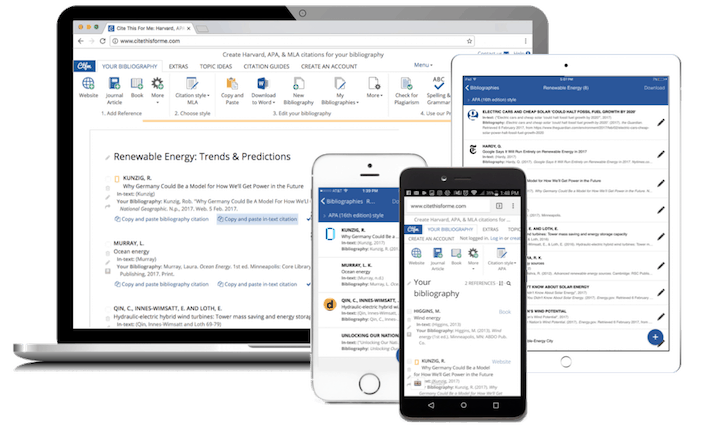Citing Is Important. Here's Why.
It’s likely that you’ve had the importance of correctly citing all your sources drilled into you by now. But what you might not have been told are the reasons why this not-to-be-skipped formatting step is so essential to your academic work. Let us fill you in on the power of a properly formatted works cited page and in-text citations:
Sort Facts from Fake News
Most of us are now familiar with the term “fake news.” It’s essentially a deliberately misleading form of journalism or propaganda, which uses both mainstream media and social media to push misinformation, often for a political agenda. While the rise of fake news attacks can have far more serious consequences, they can also cause confusion among the public as to whether reported information is fact or fake.
Citations can be a powerful tool to tackle fake news and prevent it from spreading further. If a student is required to cite sources, they’re likely to look closely at whether the source is a reputable one that they feel happy to reference.
Facilitate Fact-Checking
Of course, not all inaccuracies constitute malicious “fake news.” Sometimes information may be out of date, misinterpreted or there may have been a mistake made somewhere along the way. If you’re in any doubt as to whether a piece of information is factual or not, you’ll want to double check it—the same goes for your instructor. Including clear and accurate citations will allow the person reading your essay to quickly check your sources. It’s also very useful if the reader wants to research a topic further, or if you want to refer back to your sources at any point in the future.
Prevent Plagiarism
One of the most obvious reasons why students are required to cite their sources is to enable instructors to differentiate between a student’s own ideas and someone else’s. This ensures that all parties are properly credited for their work.
The rise of the Internet has unfortunately increased the opportunity for ideas or information to easily be plagiarized by another person—you can even purchase ready-written essays on a long list of popular topics online! However, some forms of plagiarism are far subtler and not necessarily intentional. A student may read about the themes of Macbeth, for example, and relay this in their work. Without clear a citation, a tutor could assume that the ideas are the student’s own, which would amount to plagiarism, whether intentional or not.
Show What You Know
Citing a variety of quality sources, preferably with differing viewpoints on a topic, is a great way to show your instructor that you really know your stuff. It not only illustrates that you’re developing excellent research skills and have thoroughly read around your topic, but also that you are able to show and discuss the topic from multiple contrasting angles—hopefully resulting in a well-balanced, well-researched paper!
Power of Persuasion
While putting opposing opinions into your paper may seem counterintuitive, it can actually help to persuade the reader to stand on your side of the argument. Citing varying viewpoints gives you the opportunity to discredit them using a combination of your own original thought and other respected and reputable sources.
Using a works cited list or annotated bibliography to reference your sources, and including correlating in-text citations within the body of your work, will enable your tutor to clearly identify the source of each idea and viewpoint, including yours. Without clear citation you run the risk of submitting a jumbled mash of ideas, weakening your core argument and making it very difficult for your reader to be persuaded by it.
Hopefully you’ve been persuaded that a thorough works cited list with correctly formatted citations is an essential element of any piece of academic work. But it doesn’t have to be a fiddly or time-consuming chore. If you’re unsure of how to create citations, turn to the online tool at Cite This For Me for help!

